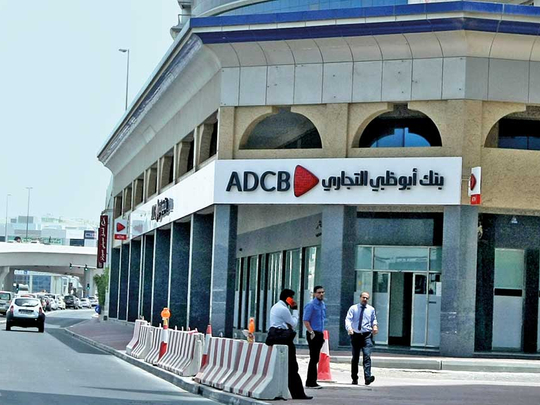
Dubai
Abu Dhabi Commercial Bank (ADCB) on Sunday posted Dh1.1 billion in net profit attributable to equity shareholders, marking an 8 per cent increase from the Dh1.02 billion recorded in the same quarter of 2016.
In a report released on the Abu Dhabi bourse, the bank said the rise in profits was driven by “healthy volumes and a strong non-interest income combined with a well-managed cost base.”
The bank’s profits for the first quarter come higher than analyst expectations, with the Bloomberg consensus at Dh1.006 billion for net profits.
Alaa Eraiqat, board member and group chief executive officer of ADCB, said the bank saw a good start to the year, with top and bottom line growth in the first quarter. He added, however, that ADCB will continue to address challenges in the economic environment.
“Our stringent cost controls to drive efficiency across the bank resulted in a significant improvement in our cost-to-income ratio year-on-year. As a highly disciplined bank, we continue to take measures to address the prevailing economic conditions with a rigorous risk management and cost containment,” he said in a statement.
Impairment charges in the first quarter jumped 10 per cent year-on-year to reach Dh386 million amid a rise in impairments paid by banks across the UAE.
The bank’s operating expenses remained almost flat year-on-year at Dh740 million amid efforts to cut costs.
Meanwhile, ADCB’s net loans and advances rose 6 per cent in the first quarter to reach Dh159.8 billion, as deposits from customers rose 10 per cent year-on-year to reach Dh162.4 billion.
Customer deposit growth outpaced loan growth, resulting in a loan to deposit ratio of 98.4 per cent.
“While challenging markets have impacted the industry, the bank grew its low-cost CASA (Current And Savings Account) deposits significantly in Q1 2017, which comprised 44 per cent of total customer deposits compared to 42 per cent at year-end,” Eraiqat said.
Banks across the UAE have seen a decline in loan growth over the past year as demand for both business credit and personal loans slowed down amid tighter conditions. In November 2016, Mubarak Al Mansouri, governor of the UAE’s Central Bank, said he expected loan growth to be in the mid- to high single digits in 2017.
“I think the numbers year-on-year are reasonable considering the challenging macro picture in the UAE and the liquidity squeeze. Regarding outlook, as we can see, the macro picture is slowing down so we expect the returns on equities will not be sustainable, so you will see lower returns for the banking sector,” said Tariq Qaqish, managing director of asset management at Mena Corp.
ADCB recorded a 16.1 per cent return on average equity, almost flat from the 16 per cent in the first quarter of 2017.
ADCB’s net interest income was almost flat in the first quarter of 2017 at Dh1.41 billion, whereas net income from Islamic financing jumped 47 per cent year-on-year to reach Dh221 million.
The bank’s results come amid consolidation in the banking industry, with two of Abu Dhabi’s largest banks, National Bank of Abu Dhabi and First Gulf Bank, having just formally merged as of the beginning of April 2017.
Analysts expect to see more mergers in the industry, with speculations afloat about ADCB and Union National Bank being the next banks to merge. Both banks have denied any talks on mergers, though, but expectations are still high in the market on upcoming mergers happening in the medium term.











